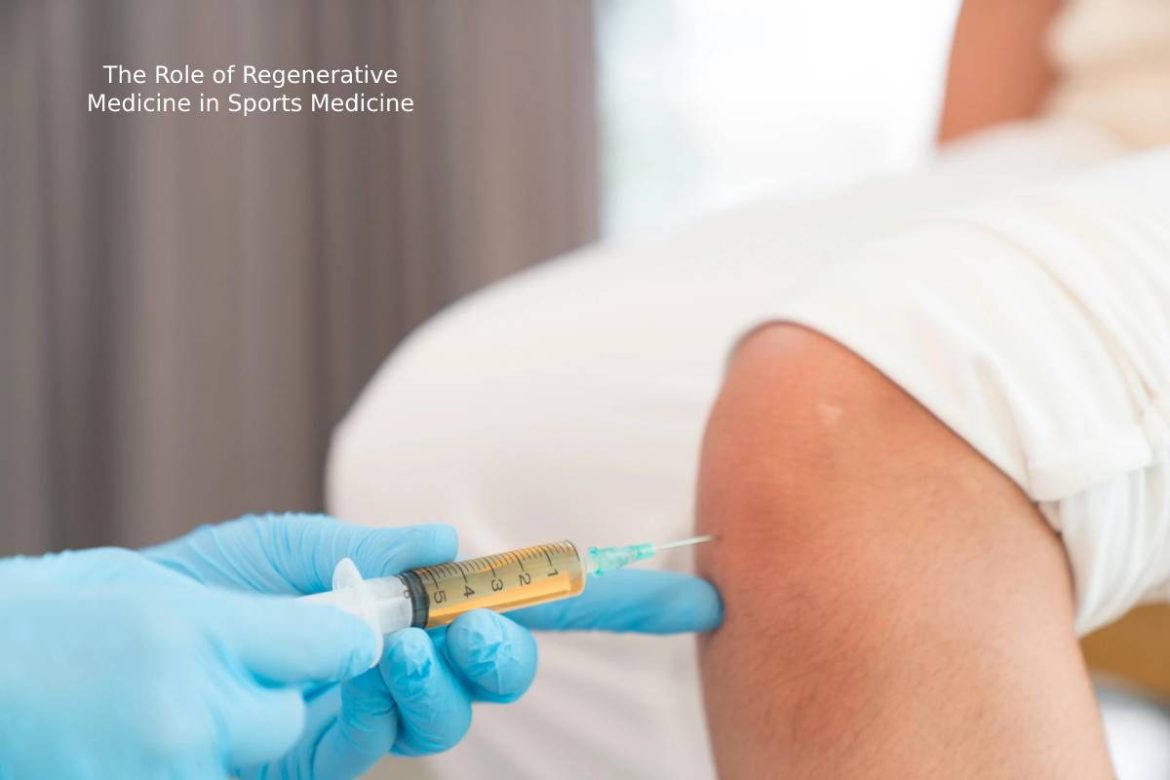The Role of Regenerative Medicine in Sports Medicine – Injuries to the musculoskeletal system, which impact many sports and other activities, can be excruciating. They can also cause complications and make it difficult for athletes to return to their chosen sport.
Regenerative medicine aims to speed up the body’s natural healing process, helping patients avoid surgery. It can also help athletes injured in sports recover more quickly and return to playing at an elite level.
Platelet Rich Plasma (PRP) Injections
Platelet Rich Plasma (PRP) injections are a nonsurgical procedure that utilizes your blood to treat injuries and wounds. It’s a great way to boost your body’s natural healing ability and accelerate recovery.
PRP is made by running your blood through a centrifuge machine. The centrifuge spins quickly, separating the blood into layers based on weight.
The platelets in your blood contain growth factors that can stimulate the production of new tissues to repair injured tissue. This has been shown to speed the healing of tendons, muscles and ligaments.
Stem Cell Injections
Stem cells have a unique ability to heal damaged tissue and help patients regain full functionality. Injections of stem cells in damaged ligaments, tendons, discs, or joints encourage natural healing processes and reduce pain and inflammation.
According to experts in regenerative medicine like Jordan Sudberg stem cell therapy is also a safe, non-surgical treatment for nagging sports injuries that aren’t getting better or don’t respond to other treatments.
Bone marrow stem cells are often used in sports medicine, but a new alternative has become popular with athletes and may offer even more significant benefits: cord blood stem cells. The cells are far easier to collect and less likely to reject the tissues they are injected into.
Autologous Bone Marrow Aspiration (Autologous Bone Marrow Aspiration – ABMA)
Bone marrow is the soft, spongy material that lines your bones and contains many cells that can grow into blood cells or other tissue types. These cells are instrumental in healing and can even regenerate new bone, cartilage, or fat.
A bone marrow aspiration is a procedure that involves drawing a sample of fluid from your bones using a needle. This is less painful than a biopsy; many patients don’t experience pain.
The Center for Sports Medicine and Wellness uses autologous bone marrow aspiration (ABMA) to treat several conditions in our patients, including chronic back pain and arthritis. This stem cell therapy can also help heal injuries and speed healing without surgery or a lengthy recovery period.
Collagen Injections
Collagen is a protein that repairs bones, skin, hair, muscles, and nails. It also helps keep the organs nourished and healthy.
As we age, the body produces less collagen and elastin, which causes wrinkles, sagging, and thinning of the skin, so we must replenish our supply of this essential protein to maintain healthy skin texture and hydration.
Injections of collagen can help improve the appearance of sun-damaged skin and may even be used to improve the condition of aging skin that has lost its natural level of collagen. They are also being trialed as a treatment for sports injuries, particularly rotator cuff tears.
Stem Cell Transplants
Stem cells are naturally present in the body and can develop into many different types of cells. They are also known to find damaged tissue and help regenerate it. In sports medicine, they can be used to treat injuries in cartilage and bones. They can also be injected into tendons to repair them.
Before a stem cell transplant, doctors insert a central line (or central venous catheter). This allows the medical team to give medicines and blood tests without frequent needle sticks.
In addition to treating injuries, stem cell therapy can fight cancer. Stem cells from the donor can attack cancer directly, improving the success of high-dose chemotherapy and other treatments.


